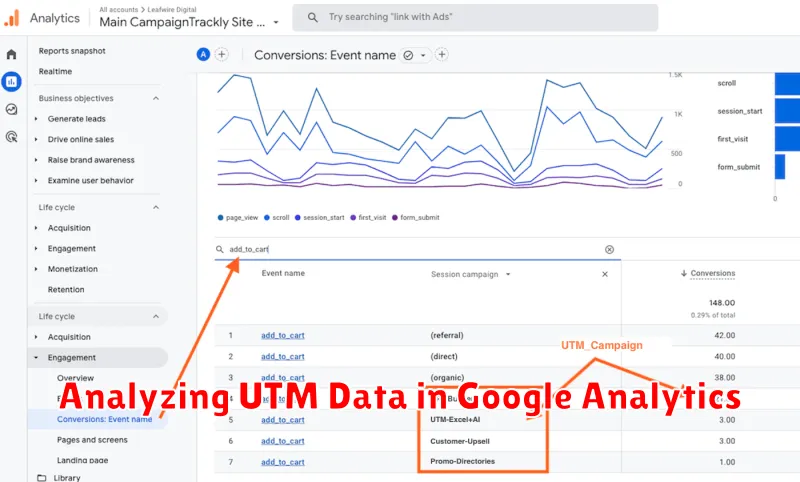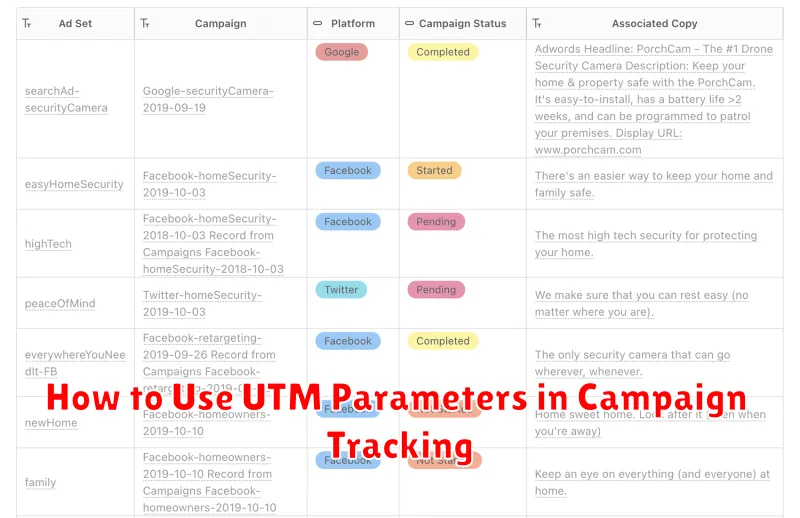In the realm of digital marketing, understanding the effectiveness of your campaigns is paramount. Campaign tracking allows you to gain valuable insights into which strategies are driving conversions and which are falling short. One of the most powerful tools for precise campaign tracking is the use of UTM parameters. These simple tags appended to your URLs provide granular data about the source, medium, and content of your traffic, allowing you to make data-driven decisions to optimize your marketing efforts. This article will delve into the specifics of how to use UTM parameters effectively, empowering you to unlock the full potential of your campaign tracking.
UTM parameters, short for Urchin Tracking Module parameters, are essential for anyone involved in online campaign tracking, from seasoned marketing professionals to small business owners. By correctly implementing these parameters, you can pinpoint the exact origins of your website traffic and attribute conversions to specific campaigns, ads, or even keywords. Learn how to use UTM parameters to gain a comprehensive understanding of your audience’s behavior, measure the ROI of your marketing investments, and refine your strategies for optimal performance. This guide will provide a step-by-step approach to creating and implementing UTM parameters in your campaign tracking URLs, ensuring accurate and actionable data collection.
What are UTM Parameters?
UTM parameters are simple tags added to the end of a URL to track the performance of online marketing campaigns. They provide valuable data about where your website traffic originates.
These parameters work by appending a small piece of code to your standard URL. This code contains information about the source, medium, and campaign, allowing analytics tools like Google Analytics to identify and categorize incoming traffic.
By analyzing the data gathered through UTM parameters, marketers can gain critical insights into which campaigns are most effective at driving traffic and conversions.
Why Use UTM Parameters?
UTM parameters offer several key benefits, including:
- Precise tracking: Identify which specific campaigns are driving results
- Improved ROI: Optimize spending by focusing on what works
- Data-driven decisions: Make informed choices based on accurate performance data
Benefits of Campaign Tracking
Campaign tracking, particularly using UTM parameters, offers valuable insights into marketing performance. It empowers you to understand which campaigns are driving the most effective results.
By analyzing campaign data, you can optimize budget allocation. Shifting resources towards high-performing campaigns and reducing spending on less effective ones leads to improved ROI.
Tracking enables data-driven decision making. Understanding user behavior and campaign performance helps refine marketing strategies and create more targeted campaigns.
Accurate attribution is another key benefit. Campaign tracking clarifies which touchpoints contribute most to conversions, allowing for better understanding of the customer journey.
Creating UTM Links

Building UTM-tagged URLs is straightforward. You begin with your destination URL, the page you want visitors to land on after clicking your link. Then, you append UTM parameters to this URL, separated by a question mark. Each parameter starts with “utm_” followed by the specific parameter name, an equals sign, and then the parameter value. Multiple parameters are joined using ampersands.
There are five standard UTM parameters: utm_source identifies the platform (e.g., google, facebook, newsletter). utm_medium specifies the marketing medium (e.g., cpc, email, social). utm_campaign indicates the specific campaign name (e.g., spring_sale, product_launch). utm_term is typically used for paid search keywords. Lastly, utm_content differentiates between variations of your ad creative or link within the same campaign.
Ensure your parameter values are consistent and descriptive. Use lowercase letters, numbers, and underscores for readability and to avoid tracking discrepancies. Replace spaces with underscores. Accurate and consistent UTM parameters are crucial for precise campaign analysis.
Analyzing UTM Data in Google Analytics

Once your campaign is running and data starts flowing into Google Analytics, you can analyze the effectiveness of your marketing efforts. UTM parameters allow you to segment your traffic and gain granular insights into which campaigns, sources, and mediums are driving the most valuable actions on your website.
Navigate to the ‘Acquisition’ section in your Google Analytics reports. Under ‘All Traffic’, select ‘Source/Medium’. Here, you’ll see a breakdown of your traffic based on the utm_source and utm_medium parameters you’ve implemented.
To dive deeper into specific campaigns, select ‘Campaigns’ and then ‘All Campaigns’. This report organizes data based on the utm_campaign parameter, allowing you to compare the performance of different campaigns side-by-side. You can further analyze your data by applying secondary dimensions such as utm_content or utm_term to see which specific ad copy or keywords are driving the best results.
Improving Future Campaigns with Data
Collected UTM parameter data provides valuable insights for optimizing future campaigns. By analyzing which sources, mediums, and campaigns are driving the most conversions, you can allocate your budget more effectively. For instance, if a specific social media platform delivers a high return on investment (ROI), you can increase spending on that platform in subsequent campaigns.
Beyond budget allocation, UTM parameters can inform content and messaging strategies. Analyzing the performance of different campaign names or content can reveal which messages resonate most strongly with your target audience. This allows you to tailor future content for optimal engagement and conversions.
Furthermore, tracking UTM parameters helps you understand user behavior throughout the customer journey. Identifying patterns in how users interact with your campaigns allows for more refined targeting and personalized messaging. This can significantly improve the effectiveness of future marketing initiatives.

